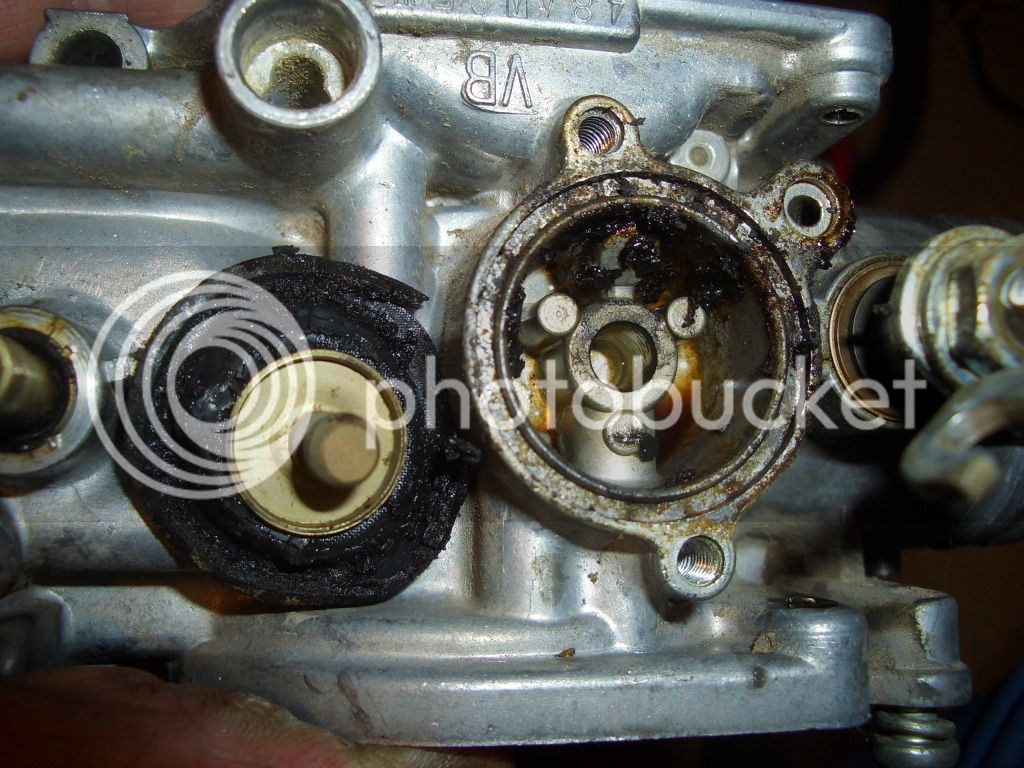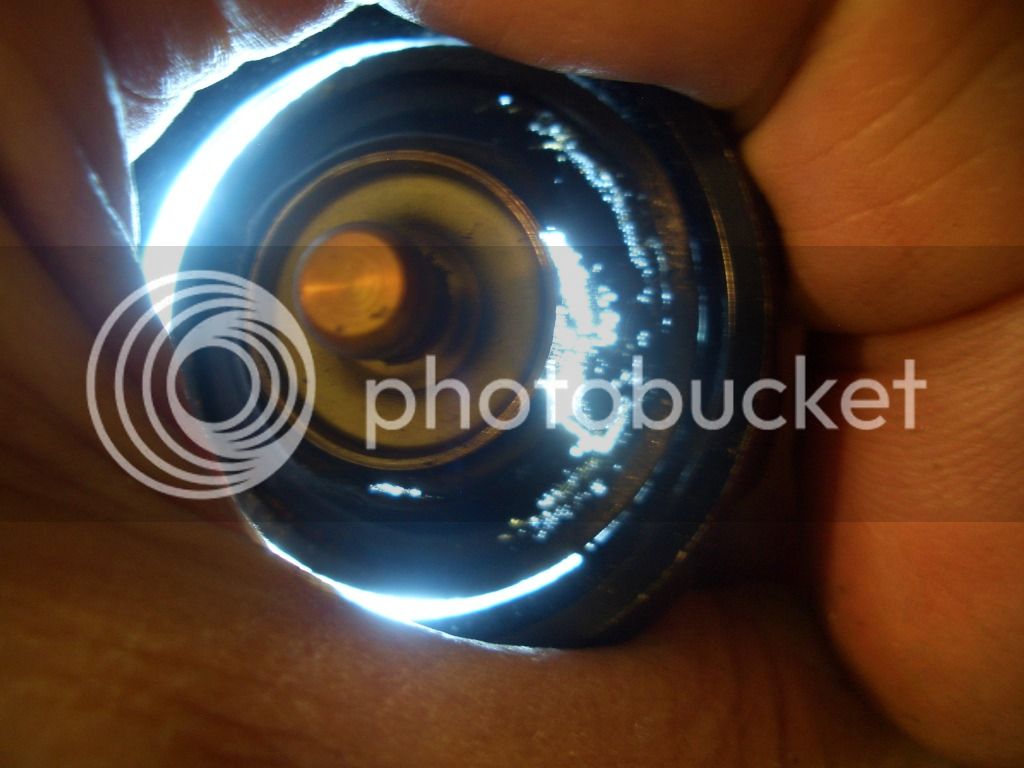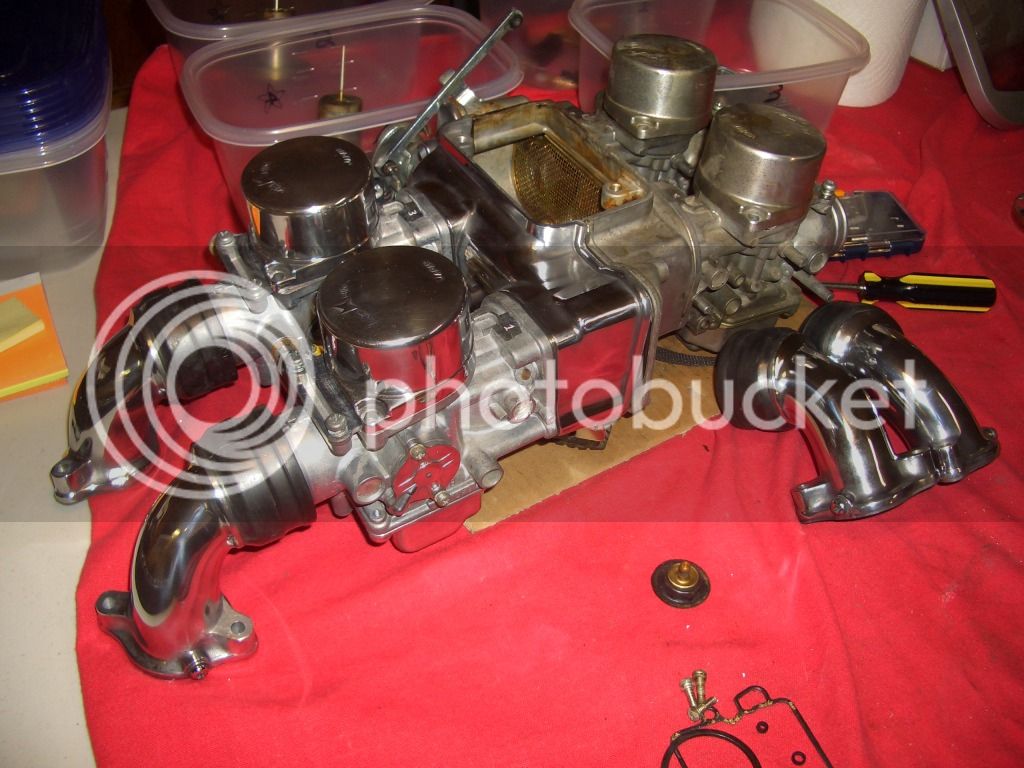When one of these old bikes follow me home, (and too many have been doing that lately) one of the first things I do after checking the visual stuff and compression check is take it out, get it good and warmed up and if everything else being somewhat normal, give it a good run slamming the throttle and general street hooligan antics for a few minutes and do a plug chop pulling back into the shop. This Gl1100I is about the 8th one of these old gals I've messed with in the last 7-8 months and just like all the others it just didn't perform like it ought to.
Everyone of them had various issues but one thing in common with all of them is the carbs are a major source of the bikes problems. This is expected and I am no longer surprised by anything I find. "Showroom condition" "always kept in garage" "runs great" "never a problem" are the usual descriptions owners give for their "babies" when in actuality they are holding on to a set of problems they don't want or can't figure out how to correct. This one is no different.
First thing I noticed was it was a pig and rode like it was on 3 1/2 cylinders along with a nice backfire when decelerating from high RPM if given enough time. There were of course other issues but that's not what this is about.
I filleted the carburetors and since this is the first 1100 I've been into I just split the plenum and decided to do the right bank first so I could play with then and see where and how everything worked. I use an ultrasonic bath to clean with but it's not big enough to do the whole set anyway so that's another reason.
I did numbers 1 and 3 first and both air cutoff valves were toast and the accelerator pump had to be pulled with pliers and considerable force. The low jets were a bitch to get out as they are pressed in and these had never been molested but were clogged up fairly well.
It's apparent that someone has soaked these at some point calling it a "cleaning" and with chemicals because one ACV was eaten almost completely up and the other was DOA.
Here's the one that was disintergrated

And this one shown on a flash light to see what's missing. These things are vulcanized rubber and the chemicals ate away the rubber so only the mesh frame is left in spots. Even a pin hole in one of these will affect the smooth operation of the Carburetor so, if you are new to bikes and doing your own work or even if you are an old hand and just hard headed ..... don't do it. Chemical cleaning is a thing of the past for me. I am so sold on the ultrasonic I'm looking around for a larger unit. Pricey yes, but worth it.

I clean for a while and get bored then I get to looking at all the neat aluminum so I go over to the buffing wheel for a while. lol Pretty much finished with the right side so I stuck 'em back in place for the obligatory before and after photo.

While the heart transplant is going on I may as well put new timing belts on so that means I get to polish the butt ugly covers this weekend. The weather is suppose to be crap here this weekend so I look forward to buttoning it all up and see what a real Goldwing performs like next week.
Everyone of them had various issues but one thing in common with all of them is the carbs are a major source of the bikes problems. This is expected and I am no longer surprised by anything I find. "Showroom condition" "always kept in garage" "runs great" "never a problem" are the usual descriptions owners give for their "babies" when in actuality they are holding on to a set of problems they don't want or can't figure out how to correct. This one is no different.
First thing I noticed was it was a pig and rode like it was on 3 1/2 cylinders along with a nice backfire when decelerating from high RPM if given enough time. There were of course other issues but that's not what this is about.
I filleted the carburetors and since this is the first 1100 I've been into I just split the plenum and decided to do the right bank first so I could play with then and see where and how everything worked. I use an ultrasonic bath to clean with but it's not big enough to do the whole set anyway so that's another reason.
I did numbers 1 and 3 first and both air cutoff valves were toast and the accelerator pump had to be pulled with pliers and considerable force. The low jets were a bitch to get out as they are pressed in and these had never been molested but were clogged up fairly well.
It's apparent that someone has soaked these at some point calling it a "cleaning" and with chemicals because one ACV was eaten almost completely up and the other was DOA.
Here's the one that was disintergrated

And this one shown on a flash light to see what's missing. These things are vulcanized rubber and the chemicals ate away the rubber so only the mesh frame is left in spots. Even a pin hole in one of these will affect the smooth operation of the Carburetor so, if you are new to bikes and doing your own work or even if you are an old hand and just hard headed ..... don't do it. Chemical cleaning is a thing of the past for me. I am so sold on the ultrasonic I'm looking around for a larger unit. Pricey yes, but worth it.

I clean for a while and get bored then I get to looking at all the neat aluminum so I go over to the buffing wheel for a while. lol Pretty much finished with the right side so I stuck 'em back in place for the obligatory before and after photo.

While the heart transplant is going on I may as well put new timing belts on so that means I get to polish the butt ugly covers this weekend. The weather is suppose to be crap here this weekend so I look forward to buttoning it all up and see what a real Goldwing performs like next week.



